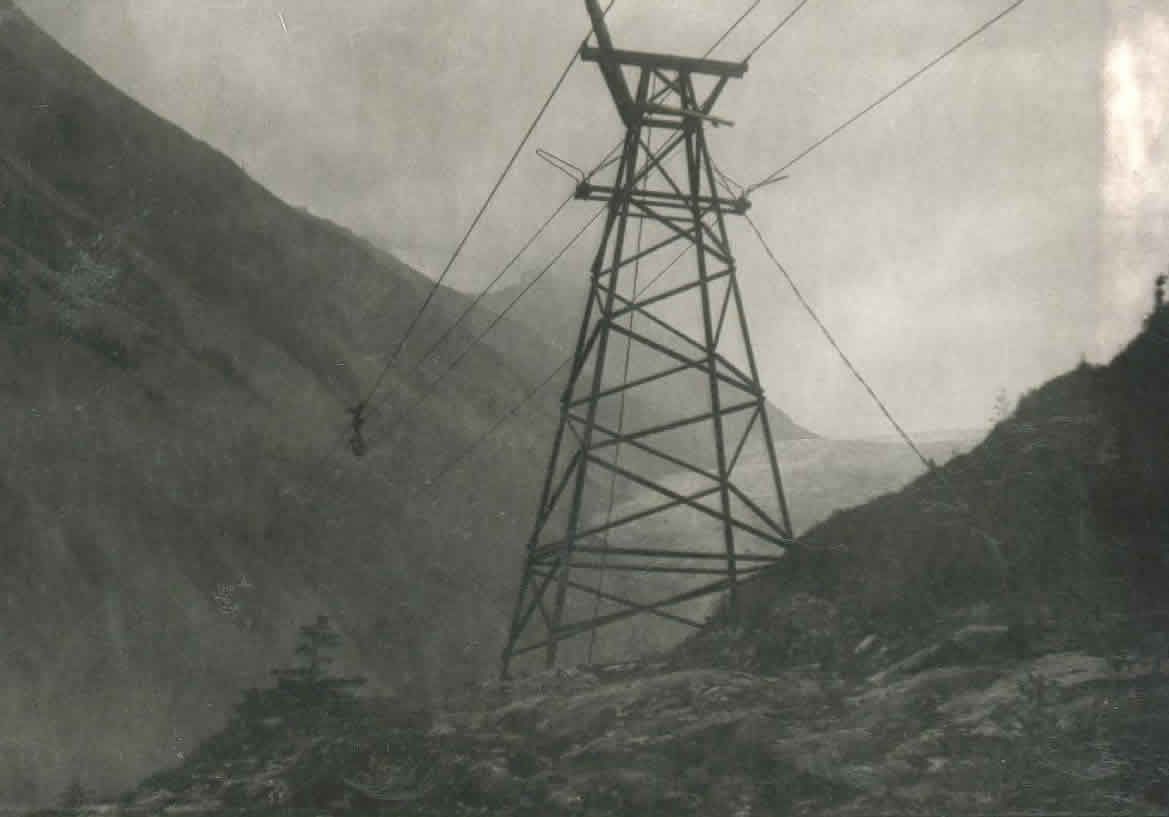
PROSPERITY
Both the Prosperity and Porter Idaho mines are on the southeast slope of Mount Rainey above Kate Ryan Creek, with workings extending from about 4,200 feet to an elevation of about 6,000 feet.
The various Crown-granted claims of these two old groups are now included with the Silverado in the extensive holdings of Cassiar Consolidated Mines Limited on Mount Rainey.
The Porter Idaho Mining Co. Ltd. was organized in 1925 to take over the Porter Idaho Syndicate formed in 1923 which controlled the claims originally staked-by Clay Porter and associates.
Underground development of the exposed veins started in 1925 on four mineralized zones, including one easterly and three northeasterly trending vein systems. Ore was shipped first in 1925 from oxidized surface material yielding high silver and lead values.
In 1926 the owners of the Prosperity claims traced one of the Porter Idaho veins uphill and initiated trenching in high-grade silver-lead mineralization and shipped some tonnage before snow came.
The Premier Gold Mining Co. Ltd. took a 52-per-cent interest in the property in 1926 and in 1928 assumed management of the Porter Idaho. An iirnpressive aerial tram-line Tramway to haul ore to Stewart from minesite.was built from the mouth of
the Marmot River to the forks where it turned to connect with the mine at 5,000 feet elevation for a total length of 5 miles.
With development and exploration expenditures, the Premier company assumed a76-per-cent interest in the Prosperity mine. By 1930 the mines were in full production, but the declining silver price and the heavy development cost involved in opening up small, isolated oreshoots forced the closure of the two properties on April 11, 1931.
In 1938 and 1939, siliceous ore stored at the Marmot dock was shipped to the Tacoma smelter at a small profit. In 1940, Porter Idaho Mining Co. Ltd. was liquidated and Premier's interest in the Prosperity was abandoned to the minority owners, Prosperity Mines Syndicate, Limited, on February 4, 1942.
Big Four Silver Mines Limited assumed control of the Prosperity, Porter Idaho, and Silverado groups in 1946, began limited exploration in 1947, and shipped 28 tons of high grade from Prosperity dumps in 1950.
In 1952, Cassiar Consolidated Mines Limited assumed control of Big Four property and consolidated the Prosperity, Porter Idaho, Silverado, and Silver Key groups. They partly rehabilitated the " E," " D," and " I " level adits, mapped part of the workings, and did limited diamond drilling.
The Prosperity tunnel was partly rehabilitated in 1963 and since then work has been concentrated on rehabilitating " I " level with the intent of extending it and then diamond drilling to explore the presumed downward extension of the upper ore zones.
Geology
The vein systems of the Prosperity and Porter Idaho mines lie within layered buff, green, and red Hazelton volcanic epiclastics, crystal tuffs, and intercalated thinly laminated siltstones and greywackes.
These are unconformably overlain to the east and southwest by contorted siltstone members of the Bowser assemblage and have been intruded by extensions of the Hyder quartz monzonite.
Along the margin of the Hyder pluton in the Kate Ryan Creek area, the country rocks have been mechanically deformed, creating a schist zone which increases in width southeast of the creek and includes both Bowser and Hazelton members.
The schists are predominantly sericitic phyllonites near the contact, but grade into chloritic and mixed graphitic zones to the east. In the mines area the country rocks have been cut by members of the northwesterly trending hornblende diorite (lamprophyre) dyke swarm crossing Mount Rainey.
